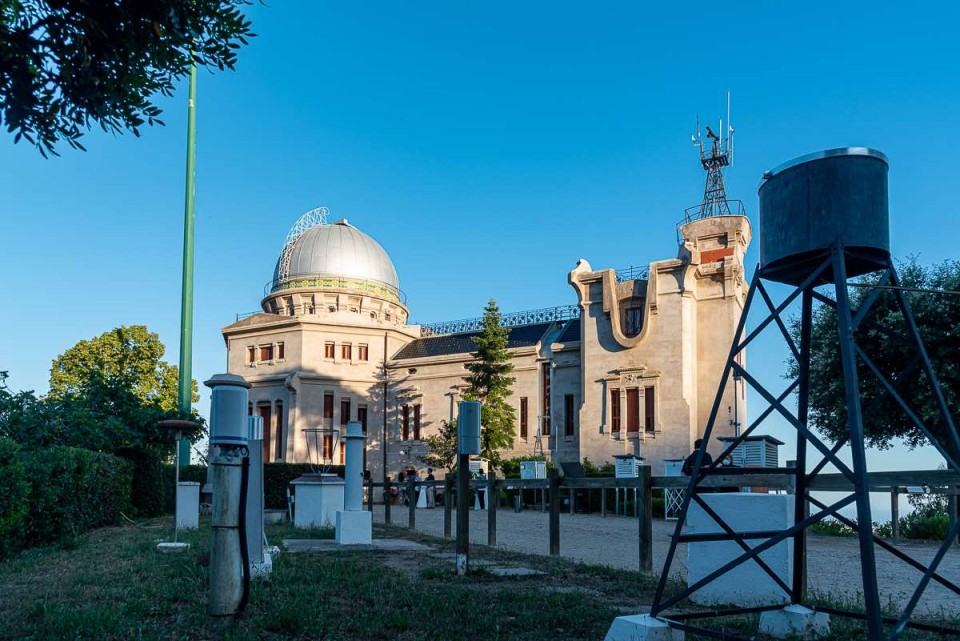Blog
Fabra Observatory: 10 curiosities that you didn't know
Lunes, 31 de august de 2020The Fabra Observatory is a benchmark of Barcelona's heritage, and has undoubtedly become one of the landmarks of the urban landscape on the Tibidabo mountain, especially notable for its privileged views of the city, the Llobregat delta and part of the Mar
Below we will learn about some of these particularities together, so that you can learn new secrets of the city of Barcelona through a building with a lot of history.
- The Fabra Observatory belongs to the Royal Academy of Sciences and Arts of Barcelona. The request for its creation arose in 1895 under the direction of two academics, the meteorologist Eduard Fontserè and the astronomer Josep Comas i Solà; but this first project was rejected due to lack of capital and because the site was reserved for the construction of the Temple of the Sacred Heart of Tibidabo. Finally, seven years later and thanks to the economic legacy of Camil Fabra i Fontanills, first Marquis of Alella, its construction was possible (hence its name), although it had to be moved a little lower.
- The neoclassical building, with a modernistpoint, is the work of the architect Josep Domenech Estapà, and was inaugurated in 1904 by King Alfonso XIII, with Josep Comas i Solà as its first director. Therefore, he has spent more than 115 years studying the cosmos and the universe, the weather and earthquakes.
- The Fabra was built with the idea that a family would live, with a house on the ground floor, running water and electricity. In 1904 the first janitor, Gabriel Campo Pérez, was installed with his wife and two children. Their tasks consisted of the maintenance of the astronomical and meteorological instruments, the surveillance of the facilities and grounds that surrounded the building and the attention of the visitors. Currently, however, no one lives anymore.
- The imposing observatory has in its cupola room an instrument for studying the universe even more impressive in its size: a 38 cm diameter Mailhat refractor telescope. It is one of the largest and oldest in Europe, still in operation today. This fact can be verified at the Dinner with Stars from June to October, which offers attendees the possibility of observing a star or other object of the universe every night through this unique instrument.
- In addition to its large refractor, the Fabra Observatory has in one of its rooms a much smaller telescope, but with a very different function: the meridian circle. This instrument can rotate freely around a horizontal axis, so that it can move describing the local meridian, instead of selecting any body in the universe whatever its position.
- In 2014, the Fabra Observatory received the distinction of Historic Site by the European Physical Society (EPS), thanks to the discovery of Titan's atmosphere, among others, as well as for its collection of centennial series in the fields of meteorology and seismic. In fact, it was the sixth observatory classified on the EPS list by historical order, and the previous five have already ceased to function in their scientific activity. Furthermore, it is the first center in Spain to obtain this recognition from the EPS.
- Since 2014, it is considered a Cultural Asset of National Interest in the category of historical monument by the Generalitat de Catalunya. He has also received other distinctions, such as the Narcís Monturiol plaque for scientific and technological merit and the Gold Medal of the city of Barcelona.
- Fabra has an asteroidwith its name in the space. The celestial body was discovered on April 14, 2001 by the astronomer Josep Manteca, although he did not go to this building but at the Begues Observatory. But the scientist wanted to dedicate it to the Barcelona Observatory for being a pioneer in astronomical studies in Catalonia and on April 3, 2007 the Minor Planet Center made the name of the asteroid official as Obsfabra.
- This building on Tibidabo became on several occasions during the Civil War a small refugee camp for some of the members of the Royal Academy of Sciences and Arts of Barcelona, and from this high location the impact of the war could be observed on the city. Despite this, not a single day of scientific observation was lacking, which has been kept up to date since its inception in 1904.
- The Fabra gardens are also guided by science or, in this case, botany, and have a clear pedagogical function. Its plants are accompanied by ceramic labels that indicate both the scientific and vulgar nomenclature and other relevant issues of the species such as distribution or what the fruit looks like. Although they are mostly Mediterranean specimens (almond, holm oak, carob or laurel, among many others), there are exotic exceptions such as Himalayan cedars or Japanese plums.
-
CHRISTMAS BROADWAY
Concert dedicated to the greatest Broadway hits in their Christmas version
See more -
BLACK FRIDAY
15% discounts% all activities
See more -
STERNALIA'S DONATIONS TO THE ANIMAL SHELTER CENTRE D'ACOLLIDA D'ANIMALS DE COMPANYIA OF BARCELONA (CAACB)
OUR COMMITMENT AS A LOCAL COMPANY FOR THE IMPROVEMENT OF THE CITY.
See more -
ENJOY WHILE LERNING
Courses, theatre, sensory experimentation, historical recreation and music. A summary of our didactic proposal beyond the guided tours.
See more -
The women hidden behind the heritage spaces of Barcelona
It's no secret that history has traditionally been given male names to tell, leaving women in the background.
See more















.png)
.png)



![[...]](https://www.sternalia.com/xtra/imgs/loading.gif)